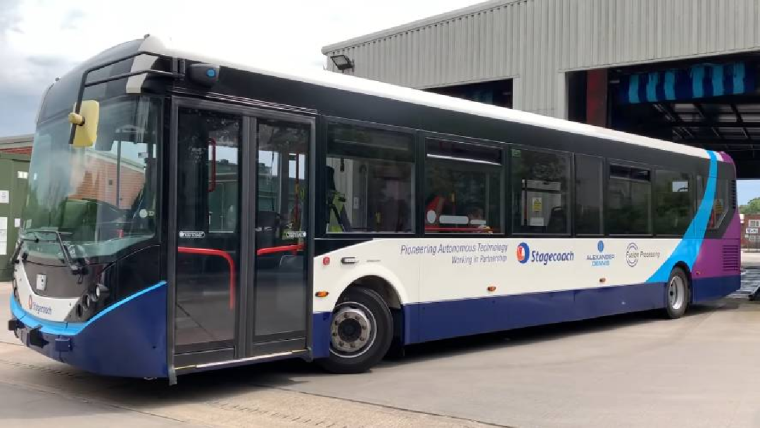
Stagecoach, a top public transport company in the UK, announced last week that its full-size self-driving buses will start running in Scotland in May. This news has generated a lot of excitement among commuters and tech fans, but some were amused to learn that these self-driving buses need two people to operate them.
Stagecoach said that the buses will be launched on the route over the Forth Bridge on May 15. Commuters would be able to make the 14-mile trip between Ferrytoll Park and ride in Fife and Edinburgh Park train and tram interchange.
This will be achieved through the use of five double-decker self-driving buses with the capacity to ferry about 10,000 passengers per week.
This comes more than two months after Stagecoach carried out a successful test on a public road in preparation for a full launch in Spring.
Although this exciting news at a time when Artificial Intelligence (AI) technology is taking the world by storm with the development of such products as OpenAi’s ChatCPT and Google’s Bard, Scotland’s self-driving buses may not bring out the autonomous aspect as many would have wished.
The Stagecoach Self-driving Buses Will Require Two Employees – The Irony!
The technology behind self-driving cars incorporates the concept of automation where vehicles use a combination of cameras, sensors, radar and AI to travel from one place to another without the need for a human operator.
Companies developing and/or testing autonomous vehicles include the Elon Musk-led Tesla, Audi, BMW, Google, Ford, General Motors, Volkswagen and Volvo. Google’s pilot involved a fleet of self-driving cars – including a Toyota Prii and an Audi TT — navigating over 140,000 miles of California streets and highways.
Therefore, “autonomous” vehicles generally evoke futuristic ideas painting a picture of a driverless living room on wheels without a driver’s seat or a steering wheel. Unfortunately, the self-driving buses of Scotland show that we still have a long way to go before we achieve full automation.
This is because they not only require one but two people to operate.
A BBC report states that the buses have built-in sensors that allow them to follow a set route at speeds of up to 50 miles per hour (mph). One of the two staff members on the bus must sit in the driver’s seat to oversee the technology. The other staff member is a “bus captain” who assists with boarding passengers, sells tickets, and responds to travelers’ inquiries.
While leading UK media outlets like the BBC, Sky News and The Guardian carried the stories with the moniker “self-driving” displaying their open excitement, Jalopnik was the only one to point out the caveat in its headline.
Readers on Twitter were also excited about the development of self-driving buses and how it was going to change the future of travel, with only a few pointing out the misnomer.
this one’s really funny because in trying to make a driverless bus they have ended up with a bus that needs a driver and a conductor on board https://t.co/gAIISrLb0C
— November (@postoctobrist) April 4, 2023
While the Scottish self-driving buses are not the only autonomous vehicles to hit public roads, it is rather ironic that the so-called driverless buses still need a human being to operate them given the current advancements in technology.
In conclusion, self-driving buses still have a long way to go before they can operate without human supervision. However, calling these vehicles driverless/self-driving does not augur well with how autonomous vehicles were envisioned to be.
Related News:
Love Hate Inu - Next Big Meme Coin
- First Web3 Vote to Earn Platform
- Latest Meme Coin to List on OKX
- Staking Rewards
- Vote on Current Topics and Earn $LHINU Tokens